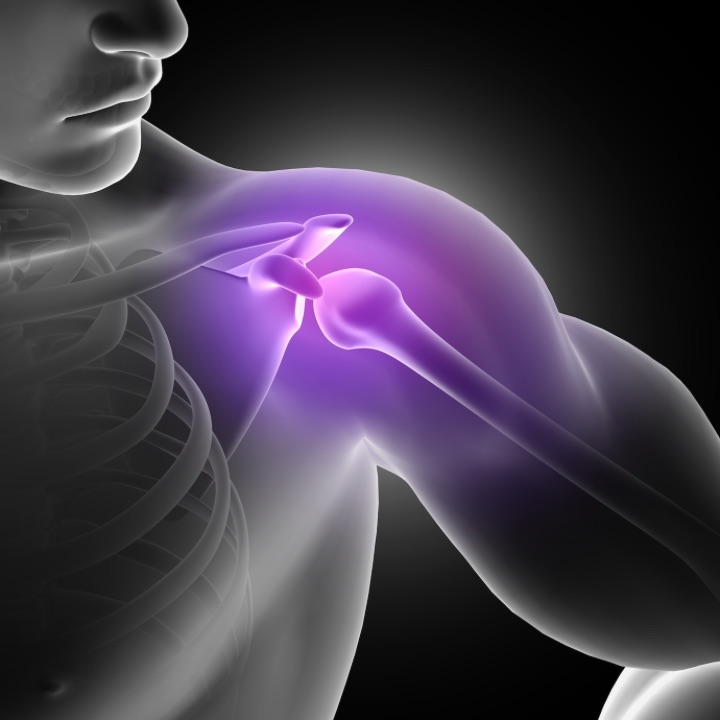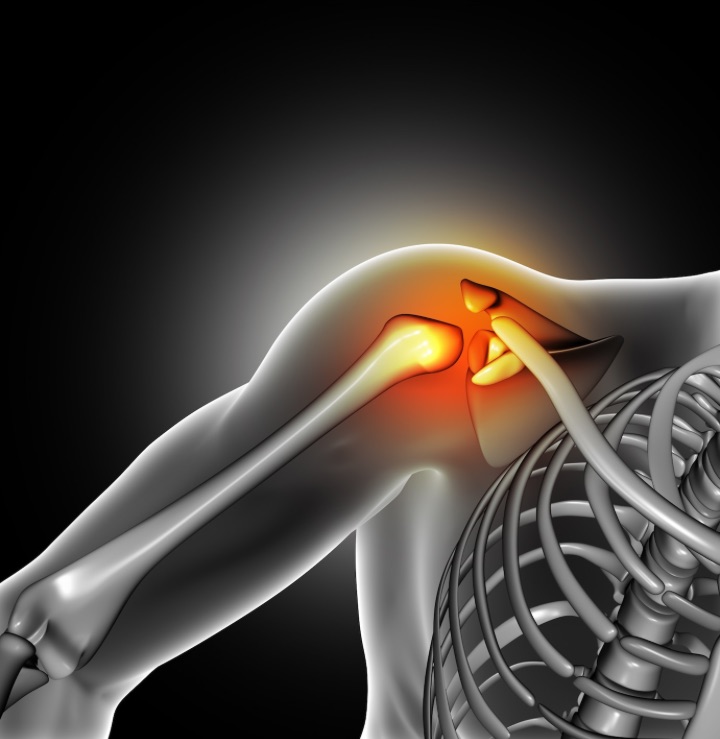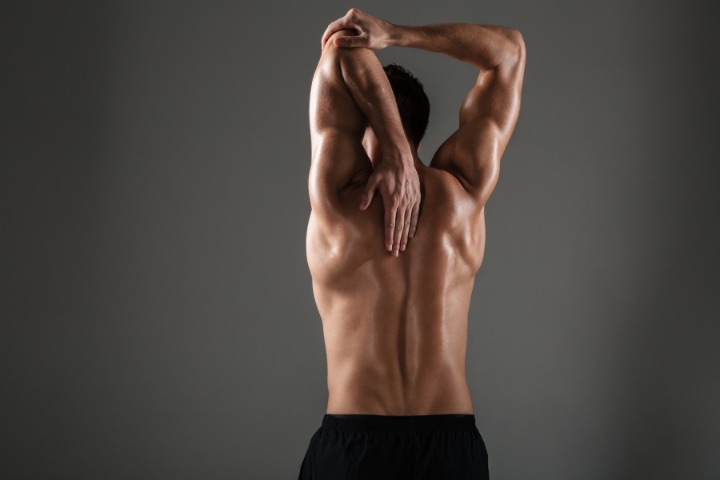A dislocated shoulder occurs when the upper arm bone pops out of its socket in the shoulder blade. A fall, a sudden impact, or a twisting motion can cause this. Individuals who play contact sports or engage in physical activities that involve repetitive overhead motion are at a higher risk of experiencing a dislocated shoulder.
Other risk factors include having loose ligaments or a shallow shoulder socket, which can contribute to shoulder instability and increase the likelihood of dislocation. Symptoms of a dislocated shoulder include pain, swelling, and limited mobility. In some cases, the shoulder may appear visibly deformed.
Treatment options for a dislocated shoulder vary depending on the severity of the injury. Some individuals may require only gentle manipulation to guide the shoulder back into its socket, while others may need surgery to repair torn ligaments or reposition the bone.
If you suspect you have dislocated your shoulder, seek medical attention immediately to prevent further injury and begin recovery.
A dislocated shoulder occurs when the upper arm bone (humerus) emerges from the shoulder blade’s (scapula) socket. This can happen due to an trauma or injury to the shoulder joint, causing the ligaments and muscles around the joint to tear or stretch. Shoulder dislocation is a common injury, particularly in younger individuals who participate in physical activities that involve overhead movements, such as sports or weightlifting.

Photo Credit: kjpargeter
The shoulder joint is the most mobile in the body, allowing for a wide range of motion. The joint comprises the humerus, scapula, and collarbone (clavicle) bones and a complex system of muscles, ligaments, and tendons that keep the joint stable and functional. Shoulder dislocations can be categorised into anterior (forward) and posterior (backward).
Shoulder dislocation is a common injury, particularly in younger individuals who participate in physical activities that involve overhead movements, such as sports or weightlifting.
Shoulder instability is a common condition that can lead to shoulder dislocation. It occurs when the shoulder joint is not held together tightly due to the shoulder’s anatomy or an injury. Individuals with shoulder instability may experience repeated shoulder dislocations, where the shoulder pops out of its socket with little effort or motion.
The shoulder joint is a ball-and-socket joint, allowing for a wide range of motion. The ball is the upper end of the humerus bone, which fits into the socket portion of the scapula bone. The space between the ball and socket is filled with cartilage, which helps the joint move smoothly and without pain. The joint also contains the rotator cuff, a group of muscles and tendons that help to rotate the arm and keep the shoulder joint stable.
The glenoid labrum is another important structure found in the shoulder joint. It is a rim of cartilage that lines the socket, adding extra stability to the joint. Injuries to the glenoid labrum can contribute to shoulder instability and dislocation.
Shoulder instability occurs when the shoulder joint is not held together tightly, making it more prone to dislocation or subluxation (partial dislocation). Some individuals are born with naturally loose joints, while others may develop shoulder instability due to an injury. Common causes of shoulder instability include:
Shoulder instability can cause a sensation of the shoulder “popping out of place” or feeling a sense of looseness in the joint. Individuals with shoulder instability may also experience pain, weakness, and reduced range of motion in the joint.
Shoulder dislocation is a common injury that can cause a lot of pain and discomfort. The first step in getting the appropriate treatment is to recognise the symptoms of a dislocated shoulder.

Photo Credit: kjpargeter
The immediate signs that you may have a dislocated shoulder include:
Long-term symptoms of a dislocated shoulder may include:
If you experience any of these symptoms after a shoulder injury, it’s important to seek medical attention right away. A healthcare provider can perform a physical exam and order imaging tests to confirm the diagnosis and determine the appropriate treatment.
There are a variety of treatment options available for managing a dislocated shoulder. The approach recommended by your healthcare professional will depend on several factors, including the severity of your dislocation and any underlying health conditions.
Non-surgical treatment options are typically considered for less severe cases of shoulder dislocation or for individuals who may not be good candidates for surgery. These options include:

Photo Credit: stefamerpik
If your shoulder dislocation is severe or accompanied by other complications, your healthcare professional may recommend surgery to repair the damage. Surgical treatment options include:
Non-surgical treatment options are generally less invasive and carry fewer risks than surgical approaches. However, they may be less effective for more severe cases. In contrast, surgical options can provide more immediate and lasting relief but carry a higher risk of complications.
Your healthcare professional will help you weigh the pros and cons of each approach and determine which option is best for you.
Rehabilitation and exercises are crucial in the recovery process following a shoulder dislocation. It can help prevent future dislocations and improve overall shoulder joint stability. Here are some exercises and rehab techniques that can make a significant difference:
Range of motion exercises can improve shoulder mobility and flexibility. These exercises involve slowly moving the arm in different directions to extend the range of motion without causing pain or discomfort. Range of motion exercises typically begin with gentle movements and progress to more challenging ones as the shoulder recovers.
Strengthening exercises can help rebuild the shoulder muscles and improve joint stability. These exercises gradually increase resistance levels while performing movements targeting the shoulder muscles. Examples of strengthening exercises include shoulder presses, rows, and rotations.
Physical therapy can be an effective rehab technique for individuals with severe shoulder dislocations or those with surgery to repair the joint. Physical therapists work with patients to develop a personalised exercise plan to rebuild strength, improve range of motion, and prevent future dislocations.

Photo Credit: Freepik
“Rehabilitation and exercises play a crucial role in the recovery process following a shoulder dislocation. It can help prevent future dislocations and improve overall shoulder joint stability.”
Ice and heat therapy can alleviate pain and inflammation associated with a dislocated shoulder. Applying ice to the affected area for 20-30 minutes at a time can help reduce swelling and numb pain. After a few days, switching to heat therapy can help increase blood flow and promote healing.
Rest and recovery are essential components of the rehabilitation process. Patients should avoid any movements or activities that may cause pain or discomfort in the affected shoulder. Following a doctor’s recommendations regarding rest and activity levels is also important to allow the shoulder enough time to recover fully.
Rehabilitation and exercises can help individuals recover from a dislocated shoulder and prevent future occurrences. Patients should work with their doctors and physical therapists to develop a personalised rehab plan that meets their specific needs and goals.
While a dislocated shoulder can be a painful and debilitating injury, there are steps individuals can take to reduce their risk of experiencing it.

Photo Credit: drobotdean
Here are several preventive measures that can help maintain shoulder joint stability:
Individuals can reduce their risk of experiencing a dislocated shoulder. However, accidents can still happen, and it’s important to seek medical attention if you experience any symptoms of a dislocated shoulder.
A dislocated shoulder occurs when the top of the upper arm bone pops out of the shoulder socket. A traumatic injury, such as a fall or collision, or repetitive strain on the shoulder joint can cause this.
Symptoms of a dislocated shoulder can include intense pain, swelling, weakness, and limited range of motion in the affected shoulder. You may also notice a visible deformity or bulge near the shoulder joint. If you’re experiencing these symptoms, seeking medical attention immediately is essential.
Treatment options for a dislocated shoulder vary depending on the severity of the injury. Sometimes, the shoulder may be put back into place using a non-invasive procedure called closed reduction. Other times, surgery may be necessary to repair damaged soft tissue in the joint. After resetting the shoulder, rehabilitation exercises and physical therapy can help restore strength and mobility to the joint.
While a dislocated shoulder can heal on its own, it’s not recommended. Without proper medical attention, the shoulder joint may not be able to heal correctly, leading to long-term instability and recurring dislocations. It’s always best to seek medical attention as soon as possible following a shoulder injury.
Recovery time for a dislocated shoulder can vary depending on the severity of the injury and the treatment approach used. In general, it can take several weeks to several months to recover fully from a dislocated shoulder. As you heal, it’s essential to avoid activities that put stress on the shoulder joint and to follow your doctor’s rehabilitation plan closely.
Depending on the cause of your dislocated shoulder, there may be steps you can take to reduce the risk of recurrence. This may include exercises to strengthen the shoulder joint, lifestyle changes to improve overall physical health, and avoiding activities that put excessive stress on the shoulder. Your doctor can guide the best strategies for preventing future dislocations.